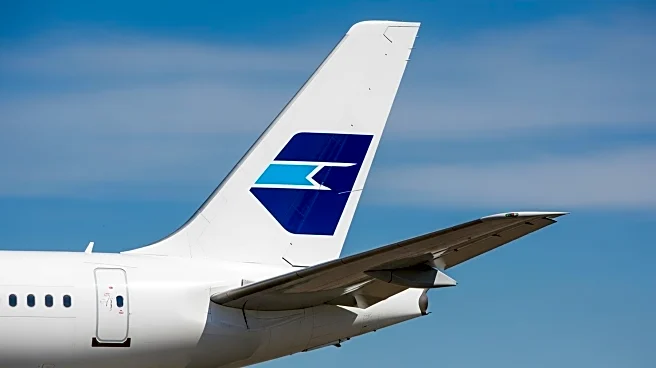What's Happening?
Singapore Airlines is set to retire its final Boeing 737-800 aircraft, marking a significant milestone in the airline's fleet modernization efforts. The last flight of the 737-800, registered as 9V-MGN, is scheduled to land on October 26, 2025, coinciding
with the end of the IATA 2025 summer season. This retirement will allow Singapore Airlines to offer a consistent passenger experience across its fleet, featuring flat bed business class seats, inflight Wi-Fi, and seat back entertainment. Historically, Singapore Airlines operated an all wide-body fleet, but the integration of SilkAir in 2021 brought narrow-body Boeing 737s into its operations. The retirement of the 737-800s, which have been progressively phased out, will leave the Boeing 737 MAX 8 as the sole narrow-body aircraft in the fleet.
Why It's Important?
The retirement of the Boeing 737-800s is a strategic move for Singapore Airlines, enhancing its competitive edge by standardizing the passenger experience across its fleet. This transition is crucial for maintaining high service standards, as the airline will now offer flat bed business class seats and modern amenities on all flights. The move also reflects the airline's commitment to fleet modernization and efficiency, which is vital in the competitive aviation industry. By focusing on the Boeing 737 MAX 8, Singapore Airlines can streamline operations and reduce maintenance costs associated with operating multiple aircraft types. This development is likely to improve customer satisfaction and loyalty, positioning Singapore Airlines favorably in the global market.
What's Next?
With the retirement of the Boeing 737-800s, Singapore Airlines will continue to focus on expanding its fleet of Boeing 737 MAX 8 aircraft, with 19 currently in service and 10 more on order. The airline is expected to leverage the advanced features of the MAX 8 to enhance its service offerings further. Additionally, Singapore Airlines may explore new routes and increase flight frequencies, capitalizing on the improved efficiency and passenger experience provided by the MAX 8. The airline's strategic focus on fleet consistency and modernization will likely influence its future operational and marketing strategies, aiming to attract more business and leisure travelers.















